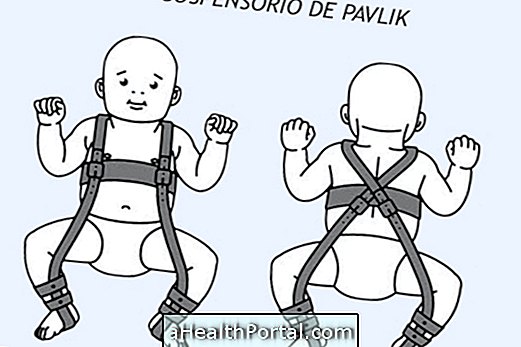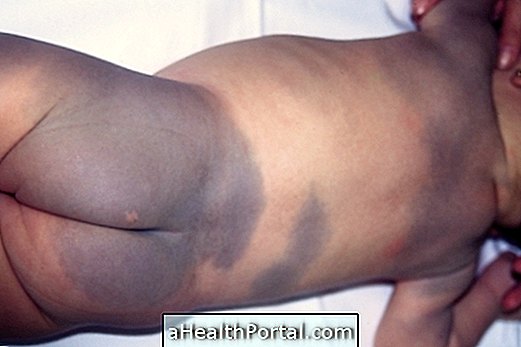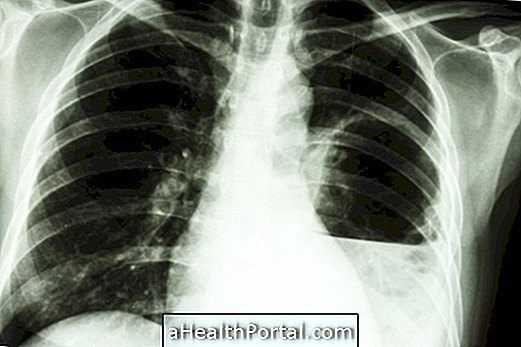Treatment for congenital hip dysplasia can be done using a type of suspender, use of a cast from the chest to the feet or surgery and should be guided by the pediatrician or the orthopedic doctor experienced in child treatment.
When dysplasia is discovered soon after birth, initially the treatment of choice is the use of the suspensory which can be maintained for 3 or 6 months, but if the finding is made later, the orthopaedist may opt for another treatment such as positioning head of the femur within the joint through a specific maneuver, followed by placement of plaster. In the latter case, the doctor may recommend a hip surgery, but this is always the last option because several surgeries may be required throughout life.
Congenital hip dysplasia is curable and the sooner diagnosed and the faster treated, the cures can be achieved. This change is also known as congenital hip dislocation and the forms of treatment for dysplasia are described below, according to the age at which it is discovered:
Newborn up to 3 months old
When dysplasia is discovered soon after birth, the treatment is to be performed as soon as the alteration is discovered and the first choice is the Pavlik suspender that attaches to the baby's legs and chest. With this suspender the baby's leg is always folded and open, but this position is ideal so that the socket of the acetabulum and the head of the femur can develop normally. This treatment cures about 96% of cases of dysplasia.

After 2 to 3 weeks of placement of this suspender, the baby should be re-examined for the physician to see if the joint is properly positioned. If it is not, the suspender is removed and plaster is put in, but if the joint is properly positioned, the suspender should be maintained until the child no longer has a hip change, which can happen in 1 month or up to 6 months.
These braces should be kept all day and all night, and can be removed only to bathe the baby and should be placed again soon after.
The use of the Pavlik braces does not cause any pain and the baby gets used to it in a few days and so it is not necessary to remove the braces if you think the baby is irritated or crying because of it because it is unlikely to be true.
Failure to adhere to the physician's advice and removal of the suspender can have serious consequences such as the permanence of the injury and the need for surgery.
Between 3 months to 1 year or when to start walking
When dysplasia is only discovered when the baby is more than 3 months old who has congenital dysplasia can be treated with manual placement of the joint in place by the orthopedist and with the use of plaster soon after to maintain the correct positioning of the joint.
The plaster should be kept for 2 to 3 months and then you must still use another device like Milgram for another 2 to 3 months. After this period the child should be reassessed to see if the development is happening correctly. If not, your doctor may recommend surgery.
After the child starts walking
When the diagnosis is made later, after the child has started walking, treatment can be done with reduction or surgery which may be pelvic osteotomy or total hip arthroplasty. Pavlik's use of plaster and suspender is not effective after 1 year of age and therefore no longer used, but the child may have been plastered for 1 year and then underwent surgery, but there was no guarantee that the dislocation would be totally reversed.
The diagnosis after this age is late and what catches the attention of the parents is that the child is limping, walking only at his fingertips or does not like to use one of his legs. Confirmation is made by X-ray, MRI or ultrasonography showing changes in the position of the femur in the hip.
Learn the care you should have after a total hip arthroplasty and how physical therapy can be done by clicking here.
Complications of dysplasia
When dysplasia is discovered late, months or years after birth, there is the risk of complications, and the most common is that one leg is shorter than the other, which causes the person to walk limp, tailored to try to match the height of both legs.
In addition, a person may develop osteoarthritis in the hip when they are young, scoliosis in the spine, and suffer from pain in the legs, hip and coast, and walking with the help of crutches. Physical therapy is necessary for long periods.
Signs of improvement and worsening
The best way to verify that the treatment is being performed correctly and that it is working is through imaging tests such as X-ray and ultrasonography that may indicate the normalization of the femoral hip joint. The exams should be performed periodically and always seen and compared with previous exams.





















